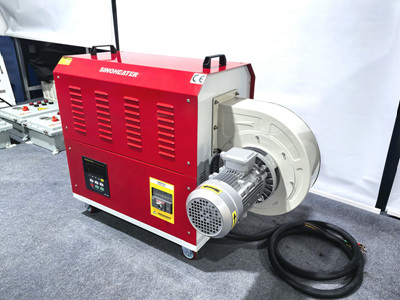Evaluating Weight Distribution When Selecting a Heat Blower for Optimal Performance and Safety
Proper weight distribution in a heat blower influences stability, portability, and operational efficiency. An unevenly balanced unit may tip over, vibrate excessively, or strain components, leading to safety risks or reduced lifespan. Below are key factors to assess when determining if a heat blower’s weight distribution is well-engineered.
1. Center of Gravity and Stability During Operation
A heat blower’s center of gravity should align with its base to prevent tipping, especially when placed on uneven surfaces or adjusted to different angles. Models with heavy components (like motors or heating elements) concentrated near the bottom tend to stay upright better than those with top-heavy designs.
For example, if the heating coil is positioned above the motor, the upper half of the unit becomes disproportionately heavy. This imbalance increases the risk of toppling when the fan operates at high speeds or when bumped accidentally. Look for designs that distribute weight evenly between the upper and lower sections.
2. Portability and Ergonomic Handling
Users who frequently move heat blowers between locations need a balanced weight distribution that reduces strain during lifting and carrying. Ideally, the heaviest parts (e.g., motor, power supply) should be centralized to avoid pulling the unit to one side when gripped by handles or straps.
Additionally, the placement of handles or grip points matters. If handles are positioned too close to the top or bottom, they may create awkward lifting angles, increasing fatigue. Models with strategically placed handles—near the center of mass—allow for smoher transport, even for prolonged periods.
3. Vibration Control and Noise Reduction
Imbalanced weight distribution often causes vibrations during operation, which can loosen internal components or generate loud noises. A well-balanced heat blower minimizes these issues by ensuring rotating parts (like fans or impellers) are aligned with the motor’s axis, reducing wobbling.
For instance, if the fan blades are unevenly weighted or the motor shaft is misaligned, the unit may produce rhythmic thumping sounds or shake violently. This not only affects user comfort but also accelerates wear on bearings and other mechanical parts. Check for designs that emphasize precision engineering to mitigate such problems.
4. Adaptability to Different Mounting Configurations
Some heat blowers are designed for wall, ceiling, or floor mounting, and their weight distribution must suit these setups. A ceiling-mounted unit with a concentrated top-heavy design, for example, may require additional support brackets to prevent sagging or detachment.
Conversely, floor models with a low center of gravity are more stable when used in high-traffic areas. If the product documentation mentions versatility in mounting options, verify that the weight distribution supports each configuration without compromising safety or performance.
Final Considerations
Assessing a heat blower’s weight distribution involves analyzing its stability, portability, vibration control, and mounting adaptability. Avoid models with vague descriptions like “sturdy build” and instead look for technical details on component placement, handle design, and vibration-dampening features. By prioritizing balanced engineering, users can ensure safer, quieter, and more efficient operation across diverse environments.



